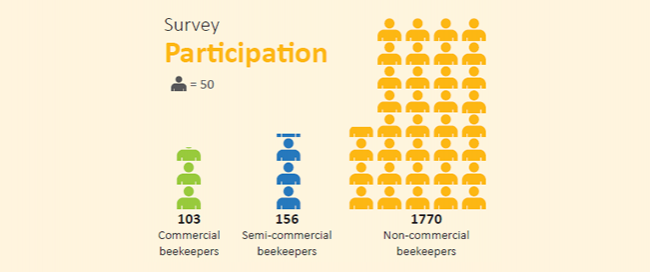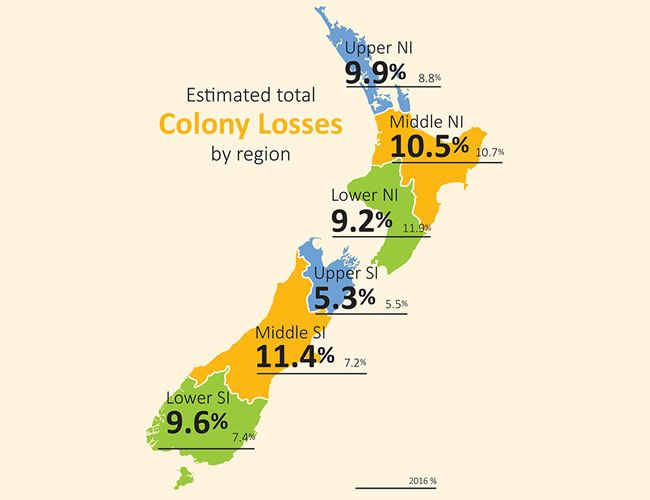Skip to main content
Summary of results - 2017
In a nutshell:

- Estimated colony losses for winter 2017 were 9.8%. This figure is statistically indistinguishable from 2015 and 2016 estimates. Recent evidence from Europe suggests that colony loss rates may change significantly over time.
- Estimated losses were substantially higher in the Middle South Island and Lower South Island in 2017 than in 2016. Estimated losses fell substantially in the Lower North Island.
- Average loss rates are signifi cantly higher for noncommercial beekeepers than for semi-commercial and commercial beekeepers; however, there is wide variation in individual loss rates.
- Leading causes of colony losses include queen problems, suspected varroa and related complications, suspected starvation, and wasps.
- Losses to natural disasters, robbing by other bees, American Foulbrood, suspected diseases, accidents, theft /vandalism, and Argentine ants are less common but also contribute to colony losses.
- Non-commercial beekeepers monitor for varroa at higher rates than semi-commercial and commercial beekeepers; visual inspection remains a prominent technique across all size classes.
- Hive numbers and competition for apiary sites continue to grow. Nearly 1/3 of beekeepers with more than 250 colonies reported apiary sites being lost or compromised due to overcrowding.















